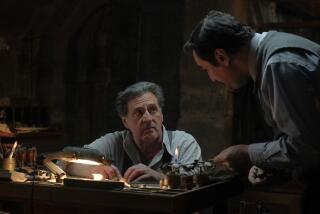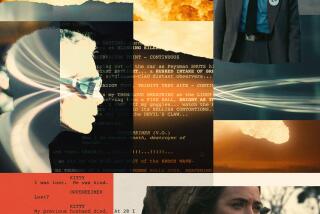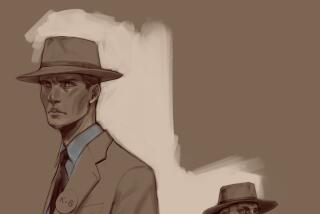Leslie Shatz <i>sound designer</i>
Current assignment: “Last Days,” Gus Van Sant’s film about the last days of a Kurt Cobain-esque rock star.
Previous credits: “Bram Stoker’s Dracula,” “The Mummy,” “Sahara” and Van Sant’s “Gerry” and “Elephant.”
Sound off: “A sound designer is a very broad term and can mean a lot of things to different movies. What I do is try to create either emotions or feelings or sounds for, like, monsters and visual effects or just things that can be created with sounds themselves rather than music.
“The first use of the term ‘sound design,’ I believe, was used in 1978 in ‘Apocalypse Now.’ I have always used the title since my first job as a sound designer in 1984 and I figure, well, I might as well stick with it.
“It has come into sort of disfavor. The Academy of Motion Picture Arts and Sciences does not recognize sound designer as a category. So strictly speaking, if you call yourself a sound designer, you are not eligible for an Academy Award. I was nominated [for an Oscar] for ‘The Mummy,’ but [the credits say] sound designer and re-recording mixer, so I was nominated as a re-recording mixer. The academy has very specific rules. I like to think of it as evolving from musique concrète — which is really what got me interested in this kind of work in the ‘60s — where they made music from real sounds, which the French started in the ‘50s.
The process: “I like to work very closely with the director from the very beginning, if possible from the script, because it’s great to get the director and writer to think about sound. It is something that can be integrated into the whole film early. It is harder once the film’s been made .”
‘Last Days’: “We put everything that we could that was recorded at the moment on [the sound track]. There is a tendency now to replace the original sound because it has what people consider defects in it — noises that are not related to the film itself. Gus was really in love with the immediacy of the original sound and furthermore, I proposed the idea of recording it in stereo, which is not usually done for movies. It’s more of a music or sound effects technique, which creates an ambient feeling to the sound track. The main thing is that it breaks a rule that is commonly held in sound today — the dialogue should come out of the center speakers.
“But on ‘Last Days,’ we had it coming out of the left speaker and the right speaker. That created more of a kind of an unsettling feeling I think allows the viewer to get into the mind-set of the guy who is about to kill himself. What the camera saw is what the mike heard.”
Mentor: “Eric Orr, a sculptor, was my mentor when I was very young. He worked as a teacher at the Barnsdall Junior Arts Center and then created this project called ‘The Sound Tunnel’ in the 1960s. That is when everything was wild and wacky and he wanted to create sculpture through the movement of sound. The idea was that you would go into a tunnel and the sound would move all around you and you would see a sculptural image. He was like the Pied Piper.
Tune In: “I dropped out of high school in 10th grade. It was when rock ‘n’ roll music was happening. I was more interested in music and sound than high school.
“I went to work at the Whiskey a Go Go. I mixed the house PA [public address]. At that time, it was run by this guy called Mario, who was kind of famous . We would be paid every night — we would have to go into the basement and line up and he’d pay us in cash and if I ever had feedback in the PA, he would look at me with these stern cold eyes and say, ‘That’s enough of that.’ I thought, ‘Oh, no, they are going to find my body in the dump.’
“I only did that for a year — going to work at 7 at night and getting off at 3 in the morning got to be old.
“That is when I heard the American Film Institute needed somebody. I was the re-recording mixer for student films, and while I was there I got to work with David Lynch, and Peter Bogdanovich brought a film there to be mixed. I worked with John Cassavetes on ‘Woman Under the Influence.’ He had a little enclave there, and he basically used all the students as free labor.
“After that I freelanced. My first big, big break was in 1976 when Francis Coppola hired me to do looping [dubbing] on ‘Apocalypse Now.’ ”
Union or guild: IATSE. “When I was growing up my mother said, one thing you’ve got to do is good health care. So when I joined the union my mom was so happy.”
Resides: Hollywood
Age: 51
Salary: “On a good year, the pay is pretty great. Some years it’s not so great. That’s how it is with freelance.”
The Prix Vulcan at Cannes: “I won it for the sound design on ‘Last Days.’ I was floored. I was moved to tears, to be really honest with you.”







